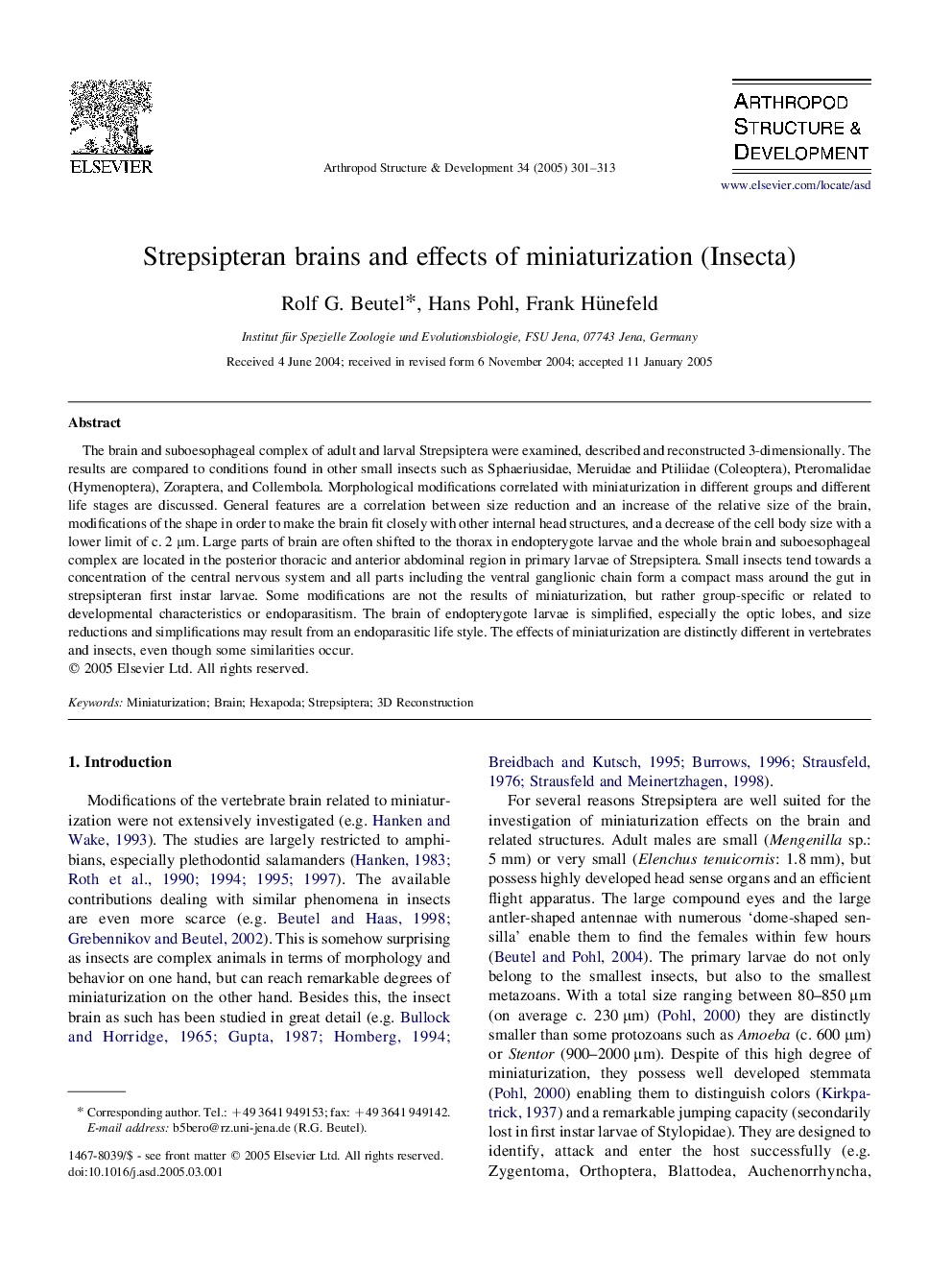| Article ID | Journal | Published Year | Pages | File Type |
|---|---|---|---|---|
| 9104124 | Arthropod Structure & Development | 2005 | 13 Pages |
Abstract
The brain and suboesophageal complex of adult and larval Strepsiptera were examined, described and reconstructed 3-dimensionally. The results are compared to conditions found in other small insects such as Sphaeriusidae, Meruidae and Ptiliidae (Coleoptera), Pteromalidae (Hymenoptera), Zoraptera, and Collembola. Morphological modifications correlated with miniaturization in different groups and different life stages are discussed. General features are a correlation between size reduction and an increase of the relative size of the brain, modifications of the shape in order to make the brain fit closely with other internal head structures, and a decrease of the cell body size with a lower limit of c. 2 μm. Large parts of brain are often shifted to the thorax in endopterygote larvae and the whole brain and suboesophageal complex are located in the posterior thoracic and anterior abdominal region in primary larvae of Strepsiptera. Small insects tend towards a concentration of the central nervous system and all parts including the ventral ganglionic chain form a compact mass around the gut in strepsipteran first instar larvae. Some modifications are not the results of miniaturization, but rather group-specific or related to developmental characteristics or endoparasitism. The brain of endopterygote larvae is simplified, especially the optic lobes, and size reductions and simplifications may result from an endoparasitic life style. The effects of miniaturization are distinctly different in vertebrates and insects, even though some similarities occur.
Related Topics
Life Sciences
Agricultural and Biological Sciences
Insect Science
Authors
Rolf G. Beutel, Hans Pohl, Frank Hünefeld,
